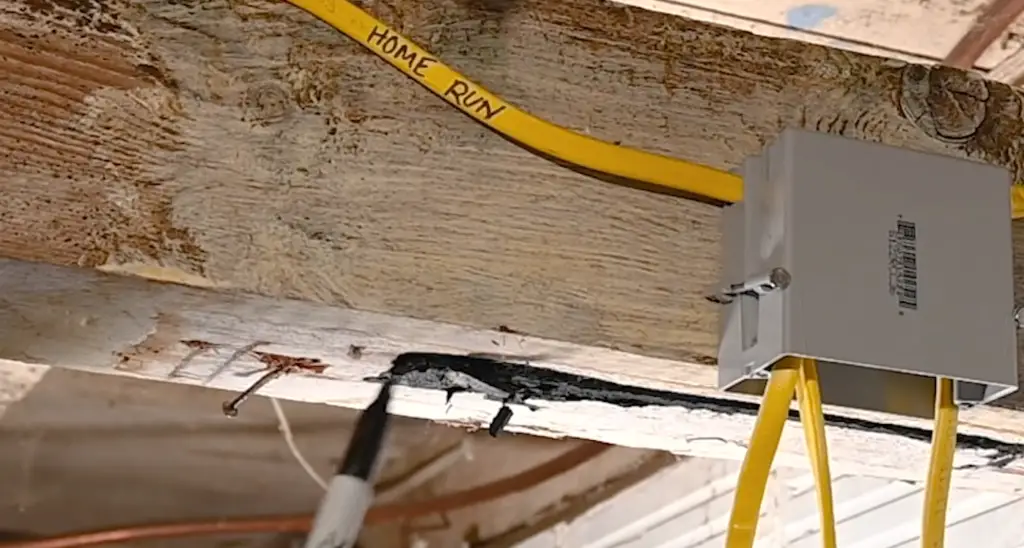Ever plugged in a powerful appliance and wondered if your wall socket could handle the load? Or maybe you’re planning a home renovation and need to know how much power your circuits can supply. Understanding how many watts a standard outlet can handle is crucial for electrical safety and efficient use of your home’s electrical system.

Image: electronicshacks.com
A standard outlet, often referred to as a 15-amp outlet, is the most common type found in residential homes. It’s designed to provide electricity to a wide range of devices, from lamps and computers to small appliances. But there’s a limit to how much power it can deliver safely.
The Basics of Watts, Amps, and Voltage
Before diving into the wattage limits of a standard outlet, let’s understand the key electrical concepts involved:
- Watts: Measure the rate at which electrical energy is used by a device. Higher wattage means the device consumes more power.
- Amps (Amperes): Measure the amount of electrical current flowing through a conductor.
- Voltage: Measures the electrical potential difference between two points. In the US, the standard voltage is 120 volts.
Calculating Power: The Wattage Formula
The relationship between these three units can be summarized with the following equation:
Watts = Amps x Voltage
This formula helps us understand the connection between electrical current, voltage, and power consumption.
The Wattage Limit of a Standard 15-Amp Outlet
A standard 15-amp outlet in the US is designed to handle a maximum of 15 amps of current. Using the wattage formula, we can calculate the maximum wattage it can handle:
Watts = 15 amps x 120 volts = 1800 watts
Therefore, a standard 15-amp outlet can safely handle up to 1800 watts of power. However, it’s important to note that this is the theoretical maximum. In reality, you should aim to use less than 80% of this maximum wattage for safe and reliable operation.

Image: www.galvinpower.org
Factors Affecting Outlet Wattage
Several factors can influence the actual wattage output of a standard outlet:
- Circuit Loading: Multiple devices plugged into the same circuit can lead to overloading.
- Wire Gauge: The thickness of the wire used to connect the outlet to the circuit breaker affects its current carrying capacity.
- Environmental Conditions: Heat, humidity, and other environmental factors can affect the performance of electrical wires and outlets.
- Appliance Usage: Some appliances, like heating elements, draw a surge of power when they first turn on, exceeding the outlet’s rated wattage.
It’s crucial to consider these factors and use the 80% rule to avoid exceeding the outlet’s capacity and potentially causing damage or electrical hazards.
Understanding Appliance Wattage Ratings
The wattage rating of an appliance can be found on its nameplate or user manual. This information is crucial for determining if a particular appliance can safely be plugged into a standard outlet. If the wattage of an appliance exceeds the recommended 80% limit of the outlet, it’s best to use a separate circuit or consider a different outlet to avoid overloading.
Common Examples of Appliance Wattage
Here are some examples of common appliances and their approximate wattage ratings:
- Lamp (incandescent): 60 – 100 watts
- Laptop: 45 – 90 watts
- Microwave: 700 – 1200 watts
- Coffee Maker: 800 – 1500 watts
- Toaster Oven: 1000 – 1500 watts
- Hair Dryer: 1500 – 1800 watts
- Space Heater: 1500 – 2000 watts
Tips for Safe Outlet Use
To ensure electrical safety and prevent overloading, follow these tips:
- Use Surge Protectors: Surge protectors can help protect your devices from power surges and provide additional safety.
- Avoid Overloading Outlets: Don’t plug in too many devices to a single outlet, particularly high-wattage appliances.
- Inspect Outlets Regularly: Check for any signs of damage, such as loose connections or frayed wires.
- Consult a Licensed Electrician: If you have any concerns about your electrical system or need electrical work done, contact a licensed electrician.
How Many Watts Can A Standard Outlet Handle
Conclusion
Understanding the wattage limits of a standard outlet is essential for safe and efficient use of your home’s electrical system. Remember the golden rule: always aim to use less than 80% of the outlet’s maximum wattage to prevent overloading and ensure the longevity of your electrical components.
If you have any doubts about the wattage of your appliances or have concerns about overloading your outlets, don’t hesitate to consult a licensed electrician for professional advice and guidance.




